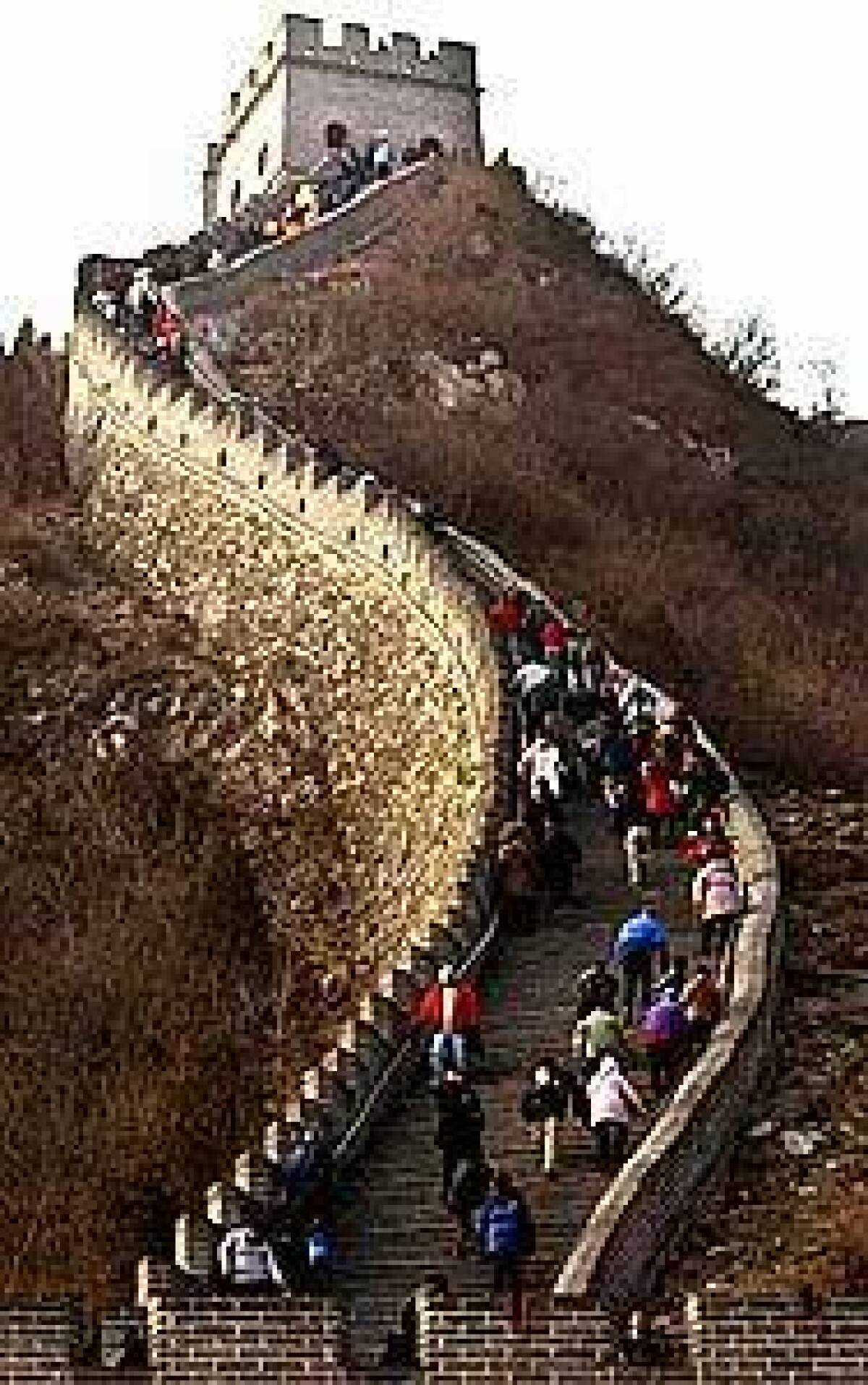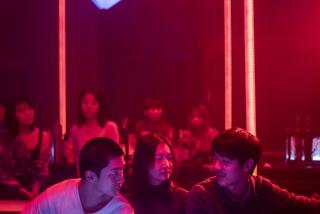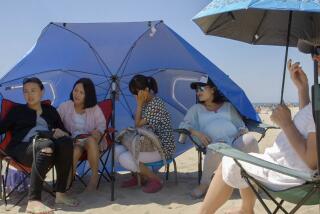So much Asia for so little

“One dollar!” -- all accounted for. “Two dollar!” -- someone was missing. Our guide was doing a head count, as he did each time we reboarded our bus.
The humor in his choice of metaphors was not lost on the group. As we traveled through China by bus and train on a December hit-the-highlights tour, we were besieged by vendors peddling “Rolex” watches, “Mont Blanc” pens and “North Face” outerwear. Their pitch: “Hello! One dollar! Two dollar!”
We were 20 travelers, sharing a sense of adventure and the knowledge that this “Historic China” tour was a bargain: 12 days, six cities, with round-trip air fare from San Francisco, charter bus and train transportation in China, lodging, meals and sightseeing for $1,099, plus $60 round trip from Los Angeles, $30 for a group visa (arranged by the tour operator), taxes ($53) and a “recommended” $44 in tips. I was traveling alone, so I paid a $250 single supplement. Total: $1,536.
San Francisco-based China Focus had promised “unbeatable prices with unparalleled comfort” and knowledgeable guides providing a “superb introduction” to old and new China. Knowing that the travel industry is striving to woo tourists to exotic locales, it seemed perfect for someone like me, a first-time visitor.
Our three-star hotels were mostly large early ‘80s commercial establishments with restaurants, shops and spas, comfortable but undistinguished. We ate our breakfasts, either Chinese style (dumplings, rice, vegetables, meats, pickled things, green things) or Western style (usually with bacon, eggs and decent coffee) in the hotel and some lunches and dinners at big restaurants catering to tourists. Meals were good and plentiful, if repetitious.
The downside of the deal: China in December. Shanghai was mild, with some rain, but temperatures fell to below freezing as we headed north. In Jinan, 300 miles south of Beijing, we encountered snow.
In keeping with Times policy, staff photographer Lawrence K. Ho and I went incognito, and we kept our distance from each other. Our Air China flight left San Francisco on Nov. 29, landing the next evening in Shanghai, 16 hours ahead of California.
As our bus approached the lights and cacophony of the city, our national guide, Han, who would accompany us throughout, cautioned us in his excellent English about pickpockets and counterfeit money and even fake bottled water: “Some people,” he said, “make it at home.”
Dec. 1: Shanghai
Our first glimpse of Shanghai by day. As our bus left the East China Hotel for the 16th century Yu Yuan Garden, we passed shanties fitted together like jigsaw puzzle pieces and, casting their shadow over them, sleek high-rises. This juxtaposition of old and new was to be a recurring theme.
We were a diverse group, many well traveled, 13 of us from California, including a retired college administrator; a former military man; a Colombia-born couple from New Jersey with their college-age daughter; a Tucson tour guide; a plastic surgeon and his dentist wife; a retired Jet Propulsion Laboratory engineer; and a Fresno couple on a 25th anniversary trip. The 21st traveler was a China Focus staffer.
Near the garden we had our first encounter with entrepreneurship, Chinese style, at the carnival-like Yu Yuan street bazaar, where windup toys danced at our feet and paper fans were waved in our faces. A good place to buy, said our local guide, Matt, “if you have some relatives you don’t like.” (Tourists are steered toward government-licensed shops.) As street vendors all but climbed onto our bus, Matt taught us a Chinese phrase: bu yao, or “I don’t want it.” “No” never worked, but bu yao did.
Soon we were standing on the Bund, the wide boardwalk along the muddy Huangpu River separating colonial Shanghai, with its 1920s and ‘30s European mansions, from Pudong, the high-tech and financial district. Farmland only 12 years ago, Pudong now grows skyscrapers. As we peered across the river through the haze, we were stared at by Chinese, most likely tourists from small towns who rarely see Westerners. To them, Matt said, we are “big noses.”
Lunch awaited at the Good Luck restaurant in Pudong -- familiar fare, Chinese food for Westerners, typical of what we would have throughout. About the most exotic dish we would tackle on this tour was goat, carved tableside from a carcass with a red ribbon around its neck. Broccoli and watermelon were ubiquitous. We were not offered local treats such as dog or eel with coagulated duck blood. And no fortune cookies. (For those who leave home without leaving home, China has TGIFriday’s and numerous Pizza Hut, McDonald’s, KFC and Starbucks outlets.)
That night, fighting jet lag, we struggled to stay awake at the New Shanghai Circus, where acrobats jumped through hoops and built gravity-defying human pyramids. The finale did get our attention: four daredevil motorcyclists zooming around inside a huge mesh globe, seemingly inches from catastrophe.
Dec. 2: Shanghai to Suzhou
Our bags had to be ready by 8 a.m., and Han told us to allow 10 minutes extra for room check; the hotel wanted to make sure we hadn’t taken anything. An in-room directory said we could buy just about everything, even the wallpaper and carpet, as souvenirs. Such directories made great reading, warning us about bringing in unlicensed swords or eating watermelon in the room.
Before catching the afternoon train to Suzhou, we visited a Children’s Palace in the former villa of a formerly in favor official. Under China’s one-child policy -- strictly enforced in the cities, less so in rural areas, where farm families still abandon little girls -- children are pampered like little emperors and empresses, and parents who can pay take them to these palaces for cultural “extras.” We peeked in on a class playing “Jingle Bells” on accordions, another counting aloud in English. Little girls, pretty in pink, were practicing ballet. The children paid us little mind -- no attention deficit disorder here.
As we drove through streets teeming with bicycles and cars, it seemed that all 16 million inhabitants were out and about, if not all 1.3 billion Chinese: the hip and chic young, an old woman balancing plants on a shoulder pole, an old man in a UCLA sweatshirt. The masses are moving from humble dwellings with shared facilities into cookie-cutter high-rises, the bonds between families and neighbors weakening as they do.
Dec. 3: Suzhou
In Suzhou (sue-joe), a canal-laced city of 5.7 million once dubbed the “Venice of the East” but now choked with traffic and pollution, our local guide warned us to beware of antiques made yesterday and man-made “silk.” (The litmus test: Only real silk has an odor when burned. It was unlikely that merchants would let us apply the test.)
In a city noted for its gardens, we visited one of the prettiest, the tranquil Garden of the Master of Nets, with its courtyards, pavilions and bridges wrapping around a lovely pond. There, Yan, our guide, drew puzzled looks with her reference to an ancient emperor’s “cucumber.” The word she was searching for was “concubine.”
We had our only Western meal, lunch, near the No. 1 Silk Factory before adjourning to the factory for a lecture on the sex life of silkworms. Female factory workers stood at a long table, dipping their hands into hot water, painstakingly separating gossamer threads from softened cocoons and threading them onto bobbins. Under the guise of education, tours make obligatory stops at government-licensed factories, all of which have shops attached. We were herded into jade, cloisonné, silk carpet, pearl and embroidery places but given little time to browse local bazaars.
In the afternoon, little covered boats with dragon motifs took us through a narrow canal past crumbling centuries-old houses and pretty little bridges. Seeing a woman emptying her portable toilet into the canal reminded us not to eat anything raw or unpeeled.
The overnight train to Qufu (chee-foo), birthplace of Confucius, was not as bad as we had feared, nor was it the Orient Express. Having chosen roommates, we settled into “soft berth” compartments for four -- small and overheated but clean. There was a Western-style bathroom at one end of the car. The train was smooth, with minimal lurching, and most of us slept.
Dec. 4: Qufu
We reached Qufu in the dark on a cold, rainy morning. Tony, our local guide, greeted us: “Confucius say he is very happy to have friends from afar.” In fact, 20% of the city’s 600,000 inhabitants are said to be descendants of the great sage, whose reputation has been rehabilitated after taking a hit during the Cultural Revolution.
After checking into the Queli Hotel, an attractive Chinese-style low-rise, we walked to the Confucian temple, where the master lectured his disciples, and visited the Confucian Mansions, where 77 generations of his family lived, the last descendants fleeing to Taiwan in 1948.
Under a gray sky, we strolled through the 500-acre Confucian forest, burial place of generations of family members, and photographed one another before a mound with a stone marking the burial site of the sage, who died in 479 BC.
Dec. 5: Tai’an
Driving along a modern highway through open country en route from Qufu to Tai’an (tie-ann), we passed clusters of farmers’ villages, their squat tile-roofed houses jammed together behind walls and brightly painted gates. Han kept up a running commentary on life in modern China. Mao-bashing is popular, and Han, who as a boy distributed propaganda for the Red Guards, talked openly about the “big mistakes” of the Cultural Revolution.
We were curious about present politics and asked about Hu Jintao, selected in November as general secretary of the Communist Party. He’s popular, Han said, but for the most part “everybody’s busy working, making money, not interested in politics.”
Mountains loomed on either side as we approached Tai’an, a city of 400,000 and home to China’s most sacred mountain, 5,069-foot Taishan, which for centuries emperors ascended to be blessed by gods and spirits. As Siberian winds whipped up and our cable car swayed alarmingly, I was the one hoping for a godly blessing.
Dec. 6: Jinan
It was snowing as we drove into Jinan, an industrial city of 5 million. Han warned us that our hotel, the Minghu, was “famous for girls. They call you, ‘You like massage?’ ” Sure enough, most of us had midnight phone calls. One couple, sleeping soundly, thought it was their wake-up call and started dressing.
Although Jinan has a lovely lake, Daming, it was too cold and wet to enjoy the boat ride. At the Yellow River we left the bus long enough to determine that it was indeed yellow -- with silt -- before retreating from the sleet and wind. Our group chose an unscheduled visit to the zoo to see two giant pandas. It was a mistake. The poor pandas paced forlornly in bare concrete-floor cages.
Our dinner host was Xu Fei, a manager of the Chinese company under which China Focus operates. Asked how the tour can be offered so cheaply, he said, “Volume” -- China Focus brings in 4,000 Americans annually. Another explanation, offered by a China Focus rep: “The boss has a very good relationship with the [Chinese] government.”
Dec. 7: Beijing
Almost on the minute, the 7:28 a.m. express train left the station for the 4 1/2-hour journey through snow-dusted farmlands and sooty towns to Beijing. Our nonsmoking car was clean and comfortable. A sign warned, “Don’t put yourself out of the window.” We saw donkey carts, shepherds and their flocks, and new toll roads, but few cars.
A waiting bus took us to our hotel, the Qianmen, for lunch. Then it was off to see the 500-year-old Temple of Heaven, walking in the footsteps of Ming and Xing emperors who came to pray to the gods for plentiful rainfall and a good harvest but without the emperors’ elephant-drawn chariots and retinues of thousands.
Beijing, with 13 million residents, is one gigantic construction site as it revs up to host the 2008 Summer Olympics. Christmas was in the air, with stone lions wearing red ribbons guarding glass and steel buildings. At night, the city lighted up with megawatt trees and multiple loops of tiny white lights strung like necklaces over the streets.
We had tickets for the Peking Opera, a 200-year-old tradition and a decidedly acquired taste, the singing sounding rather like the wailing of an animal in distress. One act had something to do with the earthly world “being like a cusp of smoke passing before one’s eyes.” Larry Ho and I decided to leave that world and, on a sidewalk facing a busy boulevard, came upon men and women, partnerless, practicing ballroom dance in the cold. It was charming.
Dec. 8: Beijing
I pinched myself with frozen fingers. I really was standing in Tiananmen Square, with the KFC colonel smiling down from a nearby building and Chairman Mao from the portal to the Forbidden City. Inside the walls, approaching the former residence of retired concubines, we spotted a Starbucks. It was about 30 degrees, and those $3 cappuccinos were divine.
The Forbidden City, with its multitude of red-walled, yellow-roofed pavilions, is so awesome that even Mao, bent on destroying icons of China’s feudal past, protected it. Before leaving home I’d rented “The Last Emperor,” and now my imagination conjured up palace intrigue and 500 years of silk-clad royals being carted about in sedan chairs.
When the royals had to get away from it all, there was the Summer Palace outside Beijing, a beautiful complex of pavilions around Kunming Lake. Tony, our local guide, told us it was the playground of empress dowager Cixi, the “dragon lady,” a onetime concubine who, through skulduggery and possibly murder, in effect ruled China for decades. She chose as her successor 3-year-old Puyi, that ill-fated last emperor, who was forced to abdicate in 1912.
Dec. 9: The Great Wall
The vendors were hawking “I climbed the Great Wall” T-shirts. I did, almost to the top, where I gazed at the ramparts snaking through brown mountains. Tony explained that the wall was built to keep out the Mongolians. It didn’t, but “it did keep the Chinese people in for thousands of years.”
Later, at the Ming Tombs, burial site of 13 emperors, their empresses and concubines, we learned of the ghastly fate of some early concubines, doomed to commit suicide upon the death of their emperors. (Unfortunately, many emperors died young.) The only excavated tomb is that of a 15th century ruler who was buried with the usual treasures. But as the Red Guards were obliterating China’s past, they smashed most of these. A few, including a solid gold spittoon, are in an on-site museum. A welcome sight here: a toilet designated four-star by the government.
On our last night some of us headed for Wangfujing, a neon-drenched shopping district with a broad pedestrian mall, off of which meander narrow side streets with food stands selling delicacies such as scorpion kebabs. On the mall, Big Macs were going for about $1.40, with women in Santa caps behind the McDonald’s counter taking orders.
Dec. 10: Home
We passed a Hard Rock Café on the way through the embassy area to the airport, as Tony talked about the clash between old and new. “As we get more and more impact from the outside world, we are forgetting about the principles of Confucianism,” he said, the idea that societal order depends on adherence to traditional values.
Confucius might not have approved of the new China, but Tony was sure that “Chairman Mao is smiling in the afterworld” as American tourists leave their dollars in China.
Tony hoped we would come back soon. “Our arms are open wide,” he said, “especially the vendors’.”
More to Read
Sign up for The Wild
We’ll help you find the best places to hike, bike and run, as well as the perfect silent spots for meditation and yoga.
You may occasionally receive promotional content from the Los Angeles Times.






